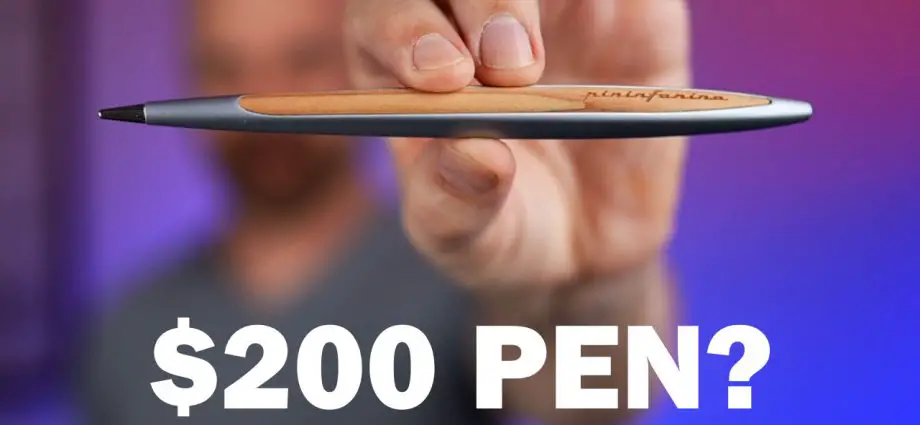Today I’m taking a look at two inkless pens: a $200 luxury model and an affordable $6 alternative. I stumbled upon these intriguing products during one of my deep dives into the Amazon rabbit hole. The concept of an inkless pen intrigued me, promising a writing experience without the need for ink or lead. Let’s dive into the details and see if the hefty price tag is justified or if the budget-friendly option reigns supreme.
Where to Purchase
Here is the Amazon listing for the cheap pens that I purchased, while this is the link to the expensive $200 pen.
Inkless Pen Comparison
First I wanted to unbox the $200 pen, a Pininfarina creation. The packaging is sleek and stylish, featuring a drawing of a concept car. Inside, there’s a beautiful wooden housing with a metal side panel boasting a wood grain design. The pen itself is undeniably attractive, with an unconventional tip that resembles a plain piece of metal. Made of aluminum, the pen claims to write like a pencil without the need for ink, lead, or graphite. It operates on oxidation, utilizing an ether graph alloy tip. The holder also comes with an elegant display groove, adding to its aesthetic appeal.
While the luxurious pen feels well-crafted, I couldn’t help but question its $200 price tag. Determined to find a more affordable option, I discovered a two-pack of inkless pens which cost about $6 each. The cheap pen features an alloy tip similar to the expensive model and also claims to last indefinitely. With two pens priced at opposite ends of the spectrum, it was time to put them to the test.


My first evaluation focused on the writing experience. I scribbled on generic printer paper with the expensive pen, and it felt disappointingly light. Applying more pressure resulted in a darker mark, but the tip felt dull and reminiscent of a pencil that desperately needed sharpening. Switching to the cheap pen, I immediately noticed its finer tip, akin to a mechanical pencil. I could achieve a wider range of darkness, making it superior in terms of flexibility and control.
Next up, I decided to test the erasability of both pens. The expensive model proved challenging to erase, leaving faint remnants behind. However, the cheaper pen erased more effectively, offering a surprisingly clean result. This test further solidified my growing preference for the affordable option.
To ensure I hadn’t jumped to conclusions too quickly, I tried different types of paper. The expensive pen fared slightly better on sketch paper, providing a darker mark. However, the distinction was not significant enough to justify its hefty price tag. I then engaged my artistic kids, who are more skilled in drawing, to gauge their opinions. They both found the $6 pen to offer better results, with darker lines and an overall more enjoyable experience. They even deemed the expensive pen as feeling “weird” and resembling a dull pencil. Their preference for the cheaper pen further supported my own conclusions.
In conclusion, while neither of these inkless pens can truly be called a “pen,” they are more akin to lead-free pencils. The $200 luxury model failed to justify its exorbitant cost, with the $6 alternative outperforming it in terms of usability, versatility, and erasability. Personally, I will continue using both pens, but the cheaper one will undoubtedly see more action. It’s suitable for everyday writing tasks and offers a better value for the money.
If you’ve used inkless pens like these, tell me what you think in the comments below.
